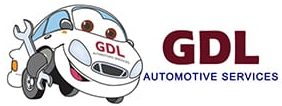The days of getting into a cab with half a million kilometres on the clock and every warning light known to man illuminated on the dash are on the way out. Why is this?
Manufactures are adding to vehicle computer systems the “limp home mode”. Basically its a fail safe system that allows the vehicle to run on the bare minimum. This is because the computer system has detected a fault that is either ignored for too long or is deemed to be doing severe damage to the vehicle. The result is, a vehicle that is almost undrivable and continuing to drive it with faults is near impossible. This is happening with many types of vehicles but in recent times we have witnessed it greatly with diesel vehicles and more specifically those fitted with a DPF (Diesel Particular Filter)
Here is what we have experienced and what we advise is your best course of action if this has occurred to you.
The DPF warning light is on. There are many variations on what this light looks like. However the cause for the light coming on is normally the same. Your DPF is beginning to block up. In most cases this is happening because the vehicle is not getting the correct parameters for the DPF to do a burn off. Again the parameters are different between manufacturers. The day-to-day city driving that most of these vehicles get never allows the DPF to do a burn off. Most of the time the car has to be constantly above 60Km/h for more than fifteen minutes at operating temperature.
In most cases people have purchased a vehicle they shouldn’t have. Diesel cars need to regularly be exposed to freeway conditions for extended periods of time, if they don’t get it the DPF problem starts to surface.
The warning light operates in three stages.
1. The warning light comes on. If this happens do not ignore it, if you catch the problem at this stage the problem is often an inexpensive fix. If you are in a position to get the vehicle up to operating temperature and consistently at a speed exceeding 60km/h for more than fifteen minutes, this will force the car to do a DPF burn.
Note: this will not work if there are any other fault codes stored in the engine ECU. If this is not an option or does not work treat the symptoms as if you are at stage two.
2. The warning light is flashing. You have to get to a mechanical repair shop. The vehicle can be forced to do a DPF burn using any decent scan tool and your back on your way.
3. The warning light is flashing and in some cases the check engine light has come on too. You’re in a real pickle now. The DPF is somehow well past 150% blocked and the check engine light prevents a forced burn and the check engine light can’t be cleared until a forced burn is done, its a catch 22 you can’t get out of. The correct procedure to rectify this is to replace the DPF and start again.
Note: In most cases this can’t be done by just anyone as a scan tool is required to pair the new DPF to the vehicle.
There are a few other options available to you here at the various stages too. Many after market DPF fuel additives will force a vehicle to do a DPF burn at lower parameters these do sometimes help if you’re only at the first stage.
If your stuck at stage three, you can remove the DPF and get it cleaned out. This is not always 100% effective but does cost the consumer far less and in our opinion is worth the gamble given the cost of replacement DPFs.
Some people suggest simply smashing out the contents of the DPF. This is poor advice for a number of reasons. Pollution laws are in place to preserve our planet for further generations, breaching them is outright unethical. Ethics aside, your vehicle is made to operate with this component, removing it will cause the vehicle to not function as it was intended and may cause more nightmares than a DPF replacement would.
The moral of the story here is don’t believe your car salesman when he says this is the car for you. Modern diesels are solely designed for frequent freeway use.
Warriewood
-
Unit 3, 13 Ponderasa Pde
Warriewood NSW 2102 - 02 9979 5933
Hornsby
-
2/ 27 King Road
Hornsby NSW 2077 - 02 9987 2818
Diesel Particular Filter Warning Light

Would You Like To Speak With The GDL Team?
Simply choose the option below that suits you best.
OR
Our Locations
Warriewood
3/ 13 Ponderasa Pde
Warriewood NSW 2102
02 9979 5933
Hornsby
2/ 27 King Road
Hornsby NSW
2077
02 9987 2818
Our Services
Follow Our Socials
Our Locations
Warriewood
3/ 13 Ponderasa Pde
Warriewood NSW 2102
02 9979 5933
Hornsby
2/ 27 King Road
Hornsby NSW 2077
02 9987 2818
Our Services
© Copyright GDL Auto 2022 | Website & Marketing By GREENhouse Media
© Copyright GDL Auto 2022 | Website & Marketing By GREENhouse Media
